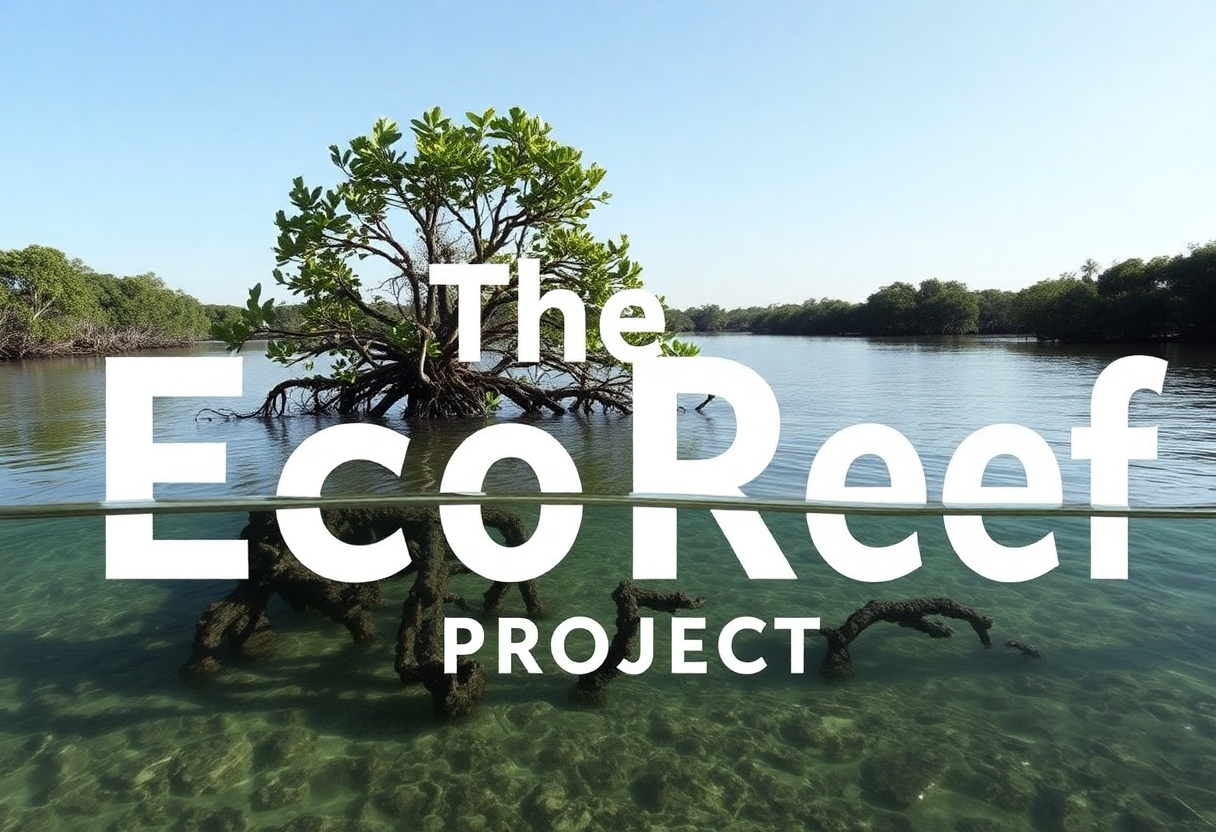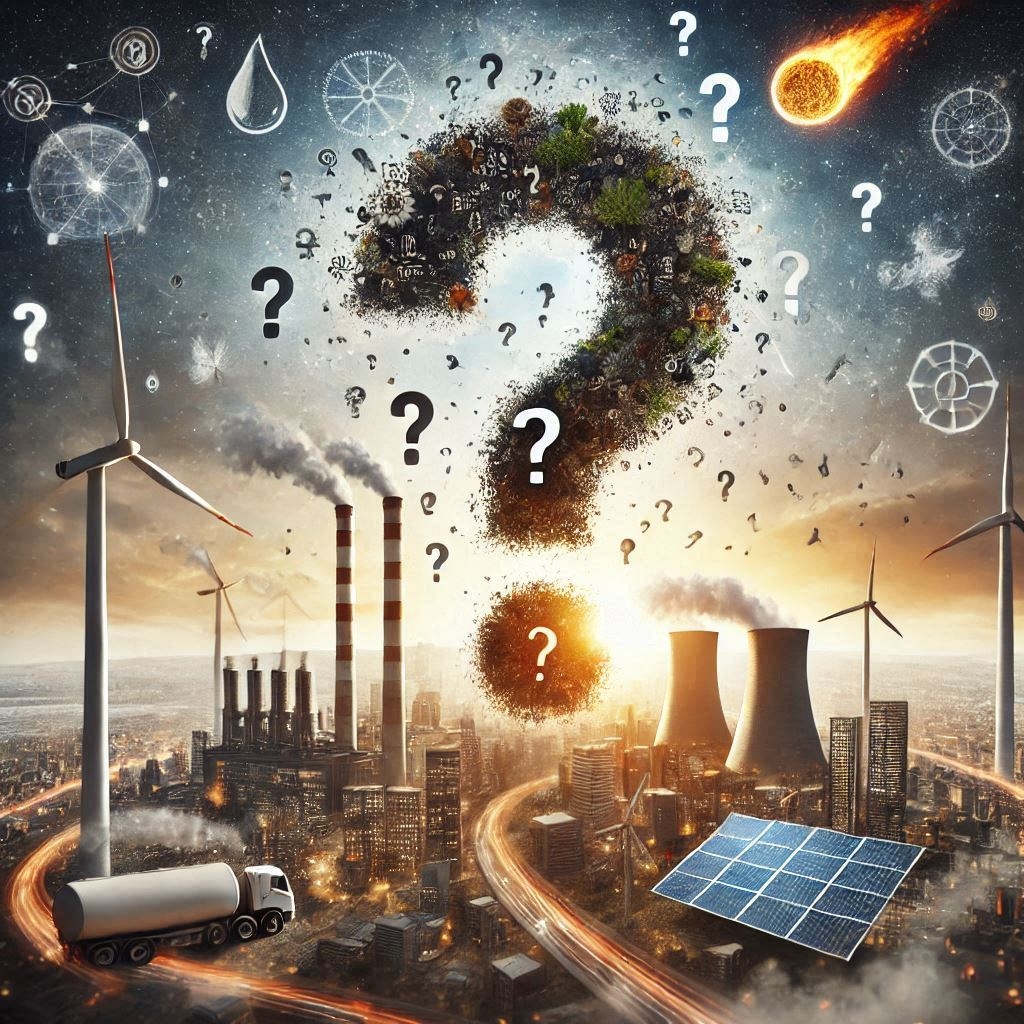If Nature Can Adapt To The World So Well, Why Can’t We?

Adaption Of Nature Vs Humans
Adaptation is an essential aspect of survival in nature & the natural world. From the smallest microorganisms to the largest mammals, nature exhibits an extraordinary ability to adjust and thrive amidst changing conditions. Yet, despite our advanced intelligence and technological prowess, humans often find adaptation challenging.

The Wonders of Natural Adaptation
Nature is brimming with examples of incredible adaptation. Species evolve over generations to better fit their environments, ensuring their survival.
Camouflage and Mimicry in Nature
Many animals have developed the ability to blend into their surroundings or mimic other organisms to avoid predators. The chameleon, for instance, can change its color to match its environment, while certain insects mimic the appearance of leaves or twigs to stay hidden. This natural adaptation increases their chances of survival by avoiding detection.
Physiological Adaptations
Some species have evolved unique physiological traits to thrive in extreme environments. For example, camels can survive long periods without water in arid deserts by storing fat in their humps, which can be metabolized into water and energy. Polar bears have thick fur and a layer of blubber to insulate against the cold Arctic temperatures, allowing them to hunt and survive in harsh conditions.

Nature Behavioral Adaptations
Animals are normally adaptable and can often change behavior and patterns to adapt to their environment. Birds, for instance, migrate thousands of kilometers to find food and favorable climates. This seasonal movement ensures they have access to resources necessary for survival and reproduction. Some species, like squirrels, hoard food to prepare for leaner times, demonstrating foresight and planning.
Rapid Nature Evolution
Certain organisms can adapt quickly to environmental changes. Bacteria, for example, can evolve resistance to antibiotics in a relatively short period, showcasing nature’s ability to adapt at a rapid pace. This rapid evolution is driven by genetic mutations and natural selection, allowing populations to survive in the face of new threats.

Human Adaptation
Challenges and Opportunities
Despite our cognitive abilities and technological advancements, humans often struggle with adaptation.
Resistance to Change
Humans are creatures of habit. We often resist change because it disrupts our comfort zones and requires us to adjust our routines. This resistance can hinder our ability to adapt to new circumstances, whether they are technological advancements, environmental changes, or societal shifts. Fear of the unknown and a preference for stability can make us reluctant to embrace change.
Complexity of Human Societies
Human societies are complex and interconnected. Changes in one aspect of life can have far-reaching impacts on others. This complexity makes adaptation a multifaceted challenge, as we need to consider economic, social, and environmental factors simultaneously. For example, transitioning to renewable energy sources requires not only technological innovation but also economic restructuring and social acceptance.

Short-Term Focus
Humans often prioritize short-term gains over long-term sustainability. This mindset can lead to decisions that hinder our ability to adapt in the long run. For example, excessive reliance on fossil fuels has immediate benefits but poses long-term environmental risks. Balancing immediate needs with future sustainability is a critical aspect of effective adaptation.
Psychological Barriers
Adaptation requires flexibility and resilience, qualities that can be hampered by psychological factors such as fear, anxiety, and stress. These barriers can make it difficult for individuals and communities to embrace change and adapt effectively. Addressing mental health and fostering a positive mindset are essential for overcoming these challenges.

Learning from Nature
Steps Towards Better Adaptation
While humans face challenges in adaptation, there are ways we can learn from nature and improve our adaptability
Embrace Flexibility
Just as nature continuously adapts, we must learn to be flexible and open to change. This involves developing a growth mindset, where challenges are seen as opportunities for learning and growth rather than threats. Embracing flexibility allows us to respond to changing circumstances with agility and creativity.
Foster Resilience
Building resilience helps us cope with and recover from adversity. This can be achieved through community support, mental health initiatives, and promoting adaptive skills such as problem-solving and critical thinking.

Long-Term Planning
Shifting our focus from short-term gains to long-term sustainability is crucial. Investing in renewable energy, sustainable agriculture, and conservation efforts can help us build a more adaptable future. Long-term planning requires foresight, collaboration, and a commitment to sustainability.
Encourage Innovation
Innovation is key to adaptation. Supporting research and development in science and technology can lead to new solutions for the challenges we face. Encouraging creativity and out-of-the-box thinking can drive progress and adaptation. Innovation often involves taking risks and exploring new possibilities, which can lead to breakthroughs and transformative change.

Promote Education and Awareness
Education plays a vital role in fostering adaptability. By promoting awareness of environmental issues, technological advancements, and social changes, we can equip individuals with the knowledge and skills needed to adapt effectively. Education empowers people to make informed decisions and take proactive steps towards adaptation.
The Role of Technology in Human Adaptation
Technology has the potential to significantly enhance our ability to adapt to changing conditions.
Climate Adaptation
Technological advancements in climate modeling and monitoring can help us understand and predict environmental changes. This information enables us to develop strategies for mitigating the impacts of climate change and adapting to new environmental conditions.

Health and Medicine
Innovations in healthcare and medicine can improve our ability to respond to new health threats and challenges. Advancements in telemedicine, personalized medicine, and disease prevention can enhance our capacity to adapt to emerging health issues.
Urban Planning
Smart city technologies and sustainable urban planning can help us design resilient and adaptable cities. By incorporating green infrastructure, energy-efficient buildings, and efficient transportation systems, we can create urban environments that are better equipped to handle future challenges.
Agriculture and Food Security
Technological innovations in agriculture, such as precision farming, genetically modified crops, and vertical farming, can enhance food security and sustainability. These advancements enable us to adapt to changing environmental conditions and ensure a stable food supply.

Challenges of Technological Adaptation
While technology offers numerous opportunities for adaptation, it also presents challenges.
Digital Divide
Access to technology is sort of an unfair idea as is not equal across allareas and populations worldwide. The digital divide can exacerbate inequalities and hinder the ability of certain groups to adapt to new conditions. Ensuring equitable access to technology is essential for inclusive adaptation.
Ethical Considerations
Technological advancements often raise ethical questions and concerns. Balancing innovation with ethical considerations is crucial to ensuring that technology benefits society as a whole.
Dependency on Technology
Overreliance on technology can create vulnerabilities. Developing backup systems and alternative strategies is essential to ensure resilience in the face of technological failures.
How Animals Coexist with the Environment
In contrast to human activities, which often result in significant environmental damage, animals typically coexist with their surroundings in a way that maintains ecological balance.

Natural Cycles and Ecosystems
Animals are an integral part of natural cycles and ecosystems. They contribute to processes such as pollination, seed dispersal, and nutrient cycling. For example, bees and other pollinators play a crucial role in the reproduction of many plants, ensuring the sustainability of ecosystems. Animals like birds and bats disperse seeds, promoting plant diversity in nature and growth.
Sustainable Resource Use
Animals use natural resources sustainably. They consume what they need for survival and do not deplete resources to the point of scarcity. Predator-prey relationships help regulate populations, ensuring that no single species overwhelms the ecosystem. This balance prevents overconsumption and maintains ecological stability.
Habitat Creation and Maintenance
Many animals contribute to the creation and maintenance of habitats. Beavers, for instance, build dams that create wetlands, which serve as habitats for a variety of species. Earthworms aerate the soil, improving its fertility and structure. These activities enhance the environment and support biodiversity.
Natural Waste Management
Animals participate in natural waste management processes. Decomposers like fungi and bacteria break down organic matter, returning nutrients to the soil. Scavengers, such as vultures and hyenas, consume dead animals, reducing the spread of disease and cleaning up the environment. These natural processes keep ecosystems clean and functioning efficiently.
Symbiotic Relationships
Symbiotic relationships between species enhance the health and sustainability of ecosystems. For example, mycorrhizal fungi form symbiotic associations with plant roots, helping plants absorb nutrients while benefiting from the plant’s photosynthesis. These mutually beneficial relationships contribute to the overall resilience of ecosystems.

Limited Environmental Footprint
Animals have a limited environmental footprint compared to humans. They do not engage in activities that lead to deforestation, pollution, or the extraction of non-renewable resources. Their activities are naturally regulated by ecological constraints, ensuring that their impact remains balanced within the ecosystem.
Evolutionary Adaptations
Over millions of years, animals have evolved adaptations that allow them to thrive in their specific environments. These adaptations ensure that they fit into their ecological niches without causing harm. For instance, the streamlined bodies of fish enable them to move efficiently through water without disrupting aquatic ecosystems.
The Contrast Between Animal Adaptation and Human Efforts
Animals and humans share the common goal of survival, yet the ways we approach adaptation to our environment differ greatly. While animals seamlessly integrate into their ecosystems, humans often face significant challenges in adapting and fitting into our surroundings. Moreover, our efforts to fix environmental issues can sometimes appear overly strenuous.

Animal Adaptation to the Environment
Nate Integration
Animals have evolved over millions of years to fit perfectly into their ecological niches. They possess physical and behavioral adaptations that allow them to thrive in their specific environments. For example, polar bears have developed thick fur and a layer of blubber to withstand Arctic temperatures, while desert-dwelling animals like camels have adapted to survive with minimal water. These adaptations ensure that animals can live in harmony with their surroundings without causing significant disruptions.
Sustainable Living
Animals use natural resources in a sustainable manner. They consume what they need and rely on intricate food webs that maintain ecological balance. Predator-prey relationships regulate populations, preventing overconsumption and resource depletion. For instance, lions and other predators help control herbivore populations, which in turn prevents overgrazing and maintains vegetation health.
Minimal Environmental Impact
The activities of animals generally have minimal negative impact on the environment. Their natural behaviors contribute to ecosystem functions, such as pollination by bees, seed dispersal by birds, and soil aeration by earthworms. These processes support biodiversity and ecological health, illustrating how animals coexist with and benefit their environment.

Human Struggles with Adaptation
Resistance to Change
Humans often resist change due to psychological and social factors. We are creatures of habit and comfort, and disruptions to our routines can be challenging. This resistance can hinder our ability to adapt to new circumstances, whether it’s technological advancements, environmental changes, or societal shifts. Our attachment to the familiar can make us reluctant to embrace necessary changes.
Complex Societal Structures
Human societies are highly complex and interconnected. Changes in one aspect of life can have far-reaching impacts on others. This complexity makes adaptation a multifaceted challenge, requiring us to consider economic, social, and environmental factors simultaneously. For example, transitioning to renewable energy involves technological innovation, economic restructuring, and social acceptance.
Environmental Impact
Human activities often have significant negative impacts on the environment. Industrialization, urbanization, deforestation, and pollution disrupt natural ecosystems and contribute to climate change. Our consumption patterns and reliance on non-renewable resources exacerbate environmental degradation. Unlike animals, our activities can cause long-term harm to the planet.

Do We Try Too Hard to Adapt and Fix the Environment?
The Pressure to Succeed
Society places immense pressure on individuals to succeed, often equating success with economic growth, technological advancement, and societal progress. This pressure can lead to efforts that prioritize short-term gains over long-term sustainability. The relentless drive for progress can result in environmental exploitation and degradation.
The Culture of Hustle
The modern world often glorifies the “hustle” culture, where working long hours and sacrificing personal time are seen as necessary for success. This culture extends to our efforts to fix environmental problems, leading to initiatives that may not be sustainable or well-thought-out. The focus on immediate solutions can overshadow the need for comprehensive and sustainable approaches.
Perfectionism and Self-Expectations
Many individuals set high standards for themselves and society, striving for perfection in various aspects of life. This drive can lead to ambitious but unrealistic environmental goals. While setting high standards is important, it is equally crucial to recognize the limits of what can be achieved and to adopt pragmatic approaches.

Finding Balance and Sustainability
Embrace Flexibility
Learning from nature, humans must develop the ability to be flexible and open to change. Embracing different mindsets allows us to adapt or view challenges differently. Flexibility enables us to adapt to new circumstances with agility and creativity.
Long-Term Planning
Shifting our focus from short-term gains to long-term sustainability is crucial. Investing in renewable energy, sustainable agriculture, and conservation efforts can help us build a more adaptable and resilient future. Long-term planning requires collaboration, foresight, and a commitment to sustainability.
Innovation and Education
Encouraging innovation and promoting education are key to enhancing our adaptability. Supporting research and development in science and technology can lead to new solutions for environmental challenges. Education empowers individuals with the knowledge and skills needed to make informed decisions and take proactive steps.

Sustainable Practices
Adopting sustainable practices in our daily lives can reduce our environmental impact. Simple actions such as reducing waste, conserving energy, and supporting eco-friendly products contribute to environmental preservation. Sustainable living requires collective effort and a commitment to making environmentally conscious choices.
Conclusion
Nature’s ability to adapt to the world is a testament to its resilience and ingenuity. While humans face unique challenges in adaptation, there are valuable lessons to be learned from the natural world. By embracing flexibility, fostering resilience, planning for the long term, encouraging innovation, and promoting education, we can enhance our ability to adapt and thrive in an ever-changing world. The key to our future lies in our capacity to learn, grow, and adapt—just as nature has done for millennia.
animals coexist with the environment in a way that maintains ecological balance and supports biodiversity. Their role in natural cycles, sustainable resource use, habitat creation, waste management, symbiotic relationships, and limited environmental footprint highlights their intrinsic ability to adapt without causing damage. Unlike human activities, which often lead to environmental degradation, animals contribute to the health and sustainability of the planet. By learning from the natural world and adopting more sustainable practices, humans can strive to minimize their impact and coexist harmoniously with the environment.

Join the Discussion
Do you believe that animals have a more natural ability to adapt to their environments compared to humans? Have you observed any examples of humans trying too hard to adapt or fix environmental issues? What steps do you think we should take to balance our ambitions with the need to live sustainably? Why does nature have these adaptions?


































































